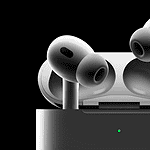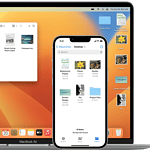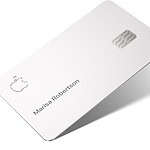Have you ever struggled to find the original source of a picture or wanted to check if your images are being used elsewhere online? Reverse image search tools can help you solve these problems by finding matching or similar images across the web. The best reverse image lookup tools help identify duplicate content, verify image authenticity, and discover where your pictures appear online.
These tools work by analyzing the visual elements of your uploaded image and comparing them to billions of other images on the internet. Whether you need to find higher resolution versions, uncover stolen content, or simply learn more about a photo you’ve found, reverse image search has become an essential tool for many internet users. Different search engines offer varying capabilities, with some specializing in certain types of images or specific search features.
1. Google Images
Google Images is one of the most popular tools for reverse image search. It helps users find similar pictures or the original source of an image online.
To use Google Images for reverse searching, visit Google Images on your computer. You can drag and drop an image into the search box or upload one from your device.
The process is simple. After uploading your image, Google shows visually similar images and websites that contain the same or similar pictures.
Google’s image recognition technology can identify objects, places, and even text within pictures. This makes it powerful for finding where an image first appeared online.
For computer users, Google offers more features. Once you search for an image and click on it, you can scroll to find related images as mentioned in Google’s support documentation.
Many marketers consider Google Image Search their primary resource. It’s described as “arguably the easiest and most popular” option according to ClearVoice’s review of reverse image tools.
On mobile devices, the process works slightly differently. You’ll need to request the desktop site or use the Google app to access full reverse image search features.
Google Images can help identify the creator of artwork, find higher resolution versions of photos, or check if someone is using your images without permission.
The tool works best with clear, well-defined images. Blurry or heavily edited pictures might produce less accurate results.
For best results, crop out unnecessary parts of the image before searching. This helps Google focus on the important elements in the picture.
While Google Images is excellent for general searches, specialized tools might work better for specific needs like finding exact matches or checking for modified versions.
2. TinEye
TinEye is one of the oldest and most reliable reverse image search engines on the internet. It lets users find where pictures appear online by searching with an actual image instead of text.
The service currently has over 73.9 billion images in its database. This massive collection helps users track down where their images are being used across the web.
Using TinEye is simple and private. You can upload an image directly, search by URL, or just drag and drop a picture into the search box. The service doesn’t save your search images, which is good for privacy.
TinEye works differently from Google Image Search. Instead of looking for similar pictures, it finds exact matches and modified versions of the same image. This makes it perfect for finding unauthorized uses of your photos.
The basic search feature is free for everyone. TinEye shows you all the places where an image appears, when it was first seen, and if it has been changed.
For professional users who need more advanced options, TinEye offers paid plans. These include faster searches and special tools for tracking many images at once.
Many photographers and artists use TinEye to protect their work. It helps them find stolen images quickly so they can take action against copyright infringement.
The service is also useful for people who want to find the original source of an image. This can help verify if news photos or viral pictures are real or edited.
TinEye works on both computers and mobile devices. This makes it easy to check images no matter where you are or what device you’re using.
Unlike some other image search tools, TinEye focuses only on finding exact matches. It doesn’t try to show you similar objects or related topics.
The company behind TinEye also offers advanced image recognition technology for businesses. These tools can help companies track their products and brand images across the internet.
3. Bing Image Search
Bing Image Search offers a powerful way to find images online using other pictures. This feature, also known as Visual Search, helps users locate similar images, products, or information related to a picture.
Using Bing’s image search is simple. You can upload a photo or take a new one to find matching or similar pictures across the web. The tool works in any web browser, making it accessible for everyone regardless of their device.
One standout feature of Bing Visual Search is its ability to identify landmarks, animals, plants, and even food items from photos. This makes it helpful for travelers trying to learn about places they visit or nature enthusiasts identifying plants and animals.
Bing ranks among the top free reverse image search tools, often considered more effective than Google for certain types of image searches. Many users find its results more accurate when looking for specific objects or scenes.
The search process is straightforward. Users can drag and drop images directly into the search box or upload them from their computer. Bing then scans the picture and shows visually similar images along with relevant web pages that contain matching content.
For online shoppers, Bing Visual Search helps find products that look like items in photos. This makes it easier to locate and buy items spotted online or in person.
The tool also lets users search specific parts of images. By selecting just a portion of a picture, Bing can focus its search on that element rather than the entire image.
Bing Visual Search works especially well for finding the source of images or locating higher quality versions of pictures. This makes it valuable for researchers, students, and content creators who need to verify image origins.
Unlike some competitors, Bing’s image search tool doesn’t require special plugins or extensions. It’s built right into the Bing search platform, making it accessible through any standard web browser.
4. Yandex Image Search
Yandex Image Search stands out as a powerful tool for finding images online. This Russian search engine offers excellent reverse image search capabilities that many users find superior to other options.
When you need to find similar pictures or the source of an image, Yandex often delivers better results. It’s particularly good at finding matches for modified images, such as those edited in Photoshop or with added elements.
The service works by analyzing colors and pixels in your uploaded image. This smart algorithm helps Yandex compare your picture to millions of others in its database to find matches.
Using Yandex Image Search is simple. Visit the Yandex Images website and click the camera icon. You can then upload an image or paste an image URL to start your search.
Many internet users consider Yandex the most reliable image finder for certain types of searches. It excels at identifying original sources of images that have been changed or cropped.
For people who want to check multiple search engines at once, tools like imgops.com allow searching across Google, Bing, Yandex, and TinEye simultaneously. This saves time when trying to find the best match.
Yandex works well on both mobile devices and computers. This flexibility makes it useful for searching images no matter which device you’re using.
The search results page shows visually similar images and websites containing matching pictures. Yandex provides tools to filter results by size, color, and other features to help narrow down what you’re looking for.
For identifying products, artwork, landmarks, or people in photos, Yandex Image Search provides a quick way to get answers. Its technology can recognize objects and scenes in pictures better than many competitors.
One advantage of Yandex is its ability to find results that other search engines miss. This makes it worth trying when Google or Bing don’t return the matches you expected.
5. PimEyes
PimEyes stands out as a specialized facial recognition search engine rather than a typical reverse image search tool. It focuses specifically on finding faces across the internet that match the one you upload.
Unlike standard reverse image search tools, PimEyes uses advanced facial recognition technology to find matching faces. This makes it particularly powerful when you’re trying to locate where your face or someone else’s appears online.
To use PimEyes, you simply upload a photo or take one with your camera. The image is automatically added to the search bar for processing.
Many users find PimEyes more effective than other options. According to Reddit discussions, if other tools don’t yield results, PimEyes often will because “the algorithm has a better correlation.”
PimEyes offers three free searches to new users. However, these free searches only show partial URLs to the sites where matches are found.
For full access to search results, PimEyes charges a fee of around $30. This premium service gives users complete information about where their facial matches appear online.
Some people use PimEyes to check if their personal photos have spread online without their knowledge. Others use it to find the identity of someone they only have a picture of.
PimEyes differs from regular reverse image search tools by its laser focus on faces. While Google or Yandex might look at the entire image, PimEyes zeroes in on facial features.
For those concerned about privacy or wanting to check their online presence, PimEyes offers a powerful tool. It can find instances of your face across websites you might not even know about.
Alternatives to PimEyes exist, with TinEye being a popular free option. TinEye allows simple drag-and-drop functionality for uploads but lacks the specialized facial recognition capabilities.
The accuracy of PimEyes has made it popular among those needing to track down faces online. Its specialized technology often finds matches that other search engines miss.
6. Pinterest Visual Search Tool
Pinterest offers a powerful visual search tool that helps users find images similar to ones they already have. This feature is especially useful when you’re trying to identify products, styles, or ideas you’ve seen but don’t know how to describe in words.
The Pinterest Lens is one of the platform’s standout features. With Lens, you can take a photo of an object around you and find visually similar pins on Pinterest. It works right from your mobile device and is very simple to use.
To use this feature, open the Pinterest app on your phone and tap the search icon. Then tap the camera icon in the search bar. Just point your camera at whatever interests you, and Pinterest will show matching items.
You can zoom in or tap on specific parts of the image to focus your search. This makes it easy to search for exactly what catches your eye in a busy photo.
Pinterest’s visual search is particularly strong for fashion, home decor, and DIY projects. If you spot a dress you like or a piece of furniture that catches your eye, Pinterest can help you find similar items.
The tool is ranked among the top reverse image search options available today. Unlike some other search engines, Pinterest specializes in lifestyle content that’s highly visual.
One great advantage of Pinterest’s visual search is that it connects you directly to products and ideas. When you find something you like, you can often follow the pin to a website where you can buy the item or learn how to make it.
Pinterest continues to improve its visual search technology in 2025. The platform combines reverse image search with creative discovery, making it more than just a tool for finding exact matches.
For best results, use clear photos with good lighting. The clearer your starting image, the better matches Pinterest will find for you.
7. Lenso.ai
Lenso.ai stands out as a powerful AI-powered reverse image search tool. It offers users the ability to search across billions of images from around the web with impressive accuracy.
The platform features several specialized search categories to meet different needs. Users can search for faces, places, duplicates, and related content through AI-trained models designed for each specific category.
What makes Lenso.ai special is its straightforward search process. Simply upload an image and the tool analyzes it to find matches across the internet. This simplicity makes it accessible to both casual and professional users.
For those looking to identify locations in photos, Lenso.ai’s place search function can be very helpful. The tool can recognize landmarks and locations from user-submitted images with surprising precision.
The face search feature helps users find photos of specific people online. This can be useful for finding public photos of yourself or researching public figures.
Finding duplicate or similar images becomes much easier with Lenso.ai. The platform can identify near-identical matches as well as visually similar content across the web.
Users have shared positive experiences with the tool. On Reddit, one user tested Lenso.ai and highlighted its straightforward approach and effectiveness for finding matches.
The service works well on different devices. Unlike some image search tools that struggle on mobile, Lenso.ai maintains functionality across platforms.
For those interested in seeing Lenso.ai in action, there are demonstration videos available on YouTube showing the tool’s capabilities and search process.
Lenso.ai also maintains an active presence on social media platforms like X (formerly Twitter) where they share updates and features of their reverse image search technology.
When compared to traditional reverse image search options, Lenso.ai’s AI-powered approach often yields more relevant results. The specialized search categories help users narrow down exactly what they’re looking for.
8. SmallSEOTools Reverse Image Search
SmallSEOTools offers a user-friendly online reverse image search tool that helps you find similar photos on the web. This free tool is simple to use and doesn’t require any special skills or technical knowledge.
The tool gives users multiple ways to search for images. You can upload a photo directly from your device, paste an image URL, or even search by keyword to find related pictures. This flexibility makes it convenient for different needs.
What makes this tool stand out is its ability to search across multiple platforms. It allows users to reverse search through images on Google, Bing, and Yandex all from one place. This saves time and gives more comprehensive results.
The process works quickly. After you submit your image, the tool rapidly scans the internet and returns results showing visually similar images. The speed makes it perfect for when you need answers fast.
One practical use of this tool is for photo verification. It helps find the original source of pictures, making it easier to spot fake or misused images. This feature is especially useful for fact-checking or verifying the authenticity of online content.
The interface is clean and straightforward. Even if you’ve never used a reverse image search before, you’ll find it easy to navigate. The tool displays results in a clear format that’s easy to understand.
For webmasters and content creators, this tool provides a way to check if their images are being used elsewhere without permission. It’s also helpful for finding higher resolution versions of images or identifying the source of unlabeled pictures.
The SmallSEOTools reverse image search doesn’t require registration or installation. You can access it directly through their website, making it a hassle-free option for quick image searches.
People concerned about privacy should be aware that any image of your face can be used on these search servers. This highlights why understanding reverse image search is important for online safety.
For those who need to use reverse image search regularly, SmallSEOTools provides a reliable option that combines ease of use with effective results.
9. Getty Images Search
Getty Images offers a handy reverse image search tool for finding similar pictures in their vast collection. When you upload an image to their platform, their “similar search” feature attempts to match it with related images in their database.
The company has developed advanced image recognition technology that helps track where images appear across the web. This makes it useful for photographers and content creators who want to monitor their work online.
Getty Images hosts millions of high-resolution photographs spanning many categories. Their reverse image search works by analyzing visual elements within your uploaded picture and finding ones with matching characteristics.
Users can access this feature directly on the Getty Images website. The process is simple – just upload your reference image and let the system find visually similar options from their collection.
The platform’s reverse image lookup is particularly helpful for creative professionals seeking inspiration or specific visual styles. It helps narrow down options from their extensive library quickly.
Getty Images turned on their “similar search” tool as part of ongoing improvements to their platform. According to reports, the development team activated this feature to enhance user experience when searching their vast image database.
This tool works well for finding stock photos that match a certain look or style. When users need alternatives to a specific image, this search method can save significant time compared to keyword searches alone.
The system’s accuracy continues to improve as Getty refines its image recognition algorithms. Regular updates make the matching process more precise and helpful for users with specific visual needs.
For those working in media, advertising, or content creation, Getty’s reverse search provides a quick way to find professional-quality images similar to reference materials. This streamlines the creative process when building visual campaigns.
10. Yahoo Image Search
Yahoo Image Search offers a simple way to find pictures online. Users can search for images by typing keywords into the search box.
While Yahoo isn’t as popular as Google or Bing for image searches, it still provides useful results. The interface is clean and easy to use for beginners.
Yahoo also lets you do reverse image searches to find similar pictures. This feature helps when you want to know where an image came from or find similar versions.
To use Yahoo for reverse image searching, you’ll need to take a few steps. The process isn’t built directly into Yahoo like it is with Google. You might need to right-click on an image and select the search option.
Yahoo Image Search works well on both computers and phones. The mobile version adjusts to fit smaller screens without losing functionality.
The search results display quickly and include thumbnails for easy browsing. You can click any thumbnail to see a larger version of the picture.
Yahoo is part of the top reverse image search tools available today. It ranks behind Google and Bing but ahead of specialized tools like Pinterest Visual Search.
For best results, make sure your images are clear. Blurry or low-quality pictures might not return accurate matches in Yahoo’s system.
Yahoo Image Search doesn’t have as many advanced filters as Google. This makes it simpler to use but less powerful for detailed searches.
If Yahoo doesn’t find what you’re looking for, try using multiple search engines. Some images appear in one search engine but not others.
Users who already have Yahoo accounts might prefer this option since everything stays within the same ecosystem. It integrates well with other Yahoo services.
Understanding Reverse Image Lookup
Reverse image lookup lets you search the web using pictures instead of words. This technology helps identify image sources, find similar pictures, and detect unauthorized use of visual content.
How It Works
Reverse image lookup uses complex algorithms to analyze visual elements in your uploaded picture. When you upload an image to search engines like Google, the system breaks it down into digital data points.
These systems look at colors, shapes, and patterns in the image. They compare these features to billions of indexed pictures online. The technology identifies matching or similar images based on these visual fingerprints.
Most search engines use content-based image retrieval (CBIR) systems. These don’t need text descriptions to find matches. Instead, they rely purely on visual similarities.
If no matches appear, it likely means the image hasn’t been posted online before. The more unique an image, the easier it is for these tools to find exact matches.
Common Uses
Reverse image lookup serves many practical purposes in everyday life:
Finding original sources: Photographers and artists use it to track where their work appears online.
Verifying products: Shoppers can check if product photos are stolen from other websites.
Identifying unknown objects or places in photos you’ve taken.
Detecting image manipulation: News agencies use these tools to spot fake or edited photos.
Finding higher resolution versions of images you already have.
Popular platforms offering this service include Google Image Search, Bing, Yahoo, Pinterest, and Getty Images. Mobile users can also perform these searches directly from their devices.
The technology helps combat image manipulation and discover related content without needing text descriptions.
Advanced Techniques
Taking your reverse image search to the next level requires special methods that go beyond basic searches. These techniques help you find more precise matches and identify specific features in images.
Metadata Analysis
Metadata is hidden information stored within image files. It can reveal when and where a photo was taken, what camera was used, and even who took it. Some reverse image search tools can extract and analyze this data.
To use metadata effectively:
- Look for EXIF data in JPG and TIFF files
- Check for geolocation coordinates
- Note the creation date and time
- Identify the device model used
This information helps verify image authenticity. For example, if someone claims a photo is recent but metadata shows it’s from 2010, you know something’s wrong.
Special tools like ExifTool can extract this data before you upload to a search engine. Some platforms strip metadata during upload, so checking beforehand is smart.
Facial Recognition
Facial recognition takes image searching to a deeper level by finding specific people in photos. This technology maps facial features and creates a digital signature that can be matched across databases.
Most basic tools like Google Images offer limited facial recognition. For better results, try:
- PimEyes – specialized in finding faces across the web
- Social media platforms – Facebook and Instagram use internal systems
- Law enforcement databases – not publicly available but very powerful
Privacy concerns surround this technology. Many countries have laws limiting its use. When searching for faces, remember that results may not be 100% accurate. False positives happen, especially with poor-quality images or similar-looking people.
For best results, use clear, front-facing photos with good lighting. Side profiles and obscured faces reduce accuracy significantly.
Frequently Asked Questions
Reverse image search tools offer different strengths depending on your specific needs. Users often wonder which service delivers the most accurate results, what alternatives exist, and what features matter most.
Which reverse image lookup service provides the highest accuracy in results?
Google Images typically offers the highest accuracy for general reverse image searches. Its massive database and advanced algorithms help identify matches even when images have been modified.
The accuracy also depends on what you’re searching for. If you need to find similar images, Google excels. For exact matches and copyright checking, TinEye often provides better results.
Are there any superior alternatives to Google for reverse image searching?
Yes, several alternatives offer unique advantages over Google. Yandex Image Search is particularly strong for facial recognition and finding variations of the same image.
TinEye specializes in finding exact image matches and tracking image use across the internet. It’s especially helpful for photographers checking if their work has been used without permission.
PimEyes focuses specifically on facial recognition with impressive accuracy for finding faces across different websites.
What is the leading free reverse image search tool available today?
Google Images remains the leading free reverse image search tool due to its ease of use, broad database, and reliable results. Users can simply drag and drop an image to search.
TinEye is another top free option that allows a certain number of searches without charge. It works well for finding exact matches rather than similar images.
Bing Image Search offers a solid free alternative with some unique filtering options not found in other tools.
How do TinEye and Google reverse image search compare in terms of performance?
TinEye excels at finding exact matches of images and tracking where an image appeared first online. It’s particularly useful for copyright monitoring and image origination tracking.
Google Images performs better at finding visually similar images and offers more filtering options. It typically returns more results due to its larger index of web images.
Response time varies between the two, but Google generally processes searches faster due to its more robust infrastructure.
Can reverse image search results be improved by using multiple search engines?
Yes, using multiple search engines significantly improves results. Each platform has different databases and search algorithms that catch things others might miss.
For best results, try running the same image through Google Images, TinEye, and Yandex. This combination covers most bases from exact matches to similar images.
This multi-engine approach is especially helpful when trying to find obscure images or when one service doesn’t return useful results.
What features should one look for when choosing a reverse image search engine?
Make sure the search accuracy is your top priority. The engine should find relevant matches that actually resemble your query image.
Database size also matters. Larger image collections mean more potential matches. Google and Bing have the largest databases of indexed images.
User-friendly features like cropping tools, filters, and mobile compatibility make the search process easier. Look for services that let you refine results by size, color, or date.
Privacy considerations are important for sensitive searches. Some services store your search images, while others like TinEye have stronger privacy policies.







